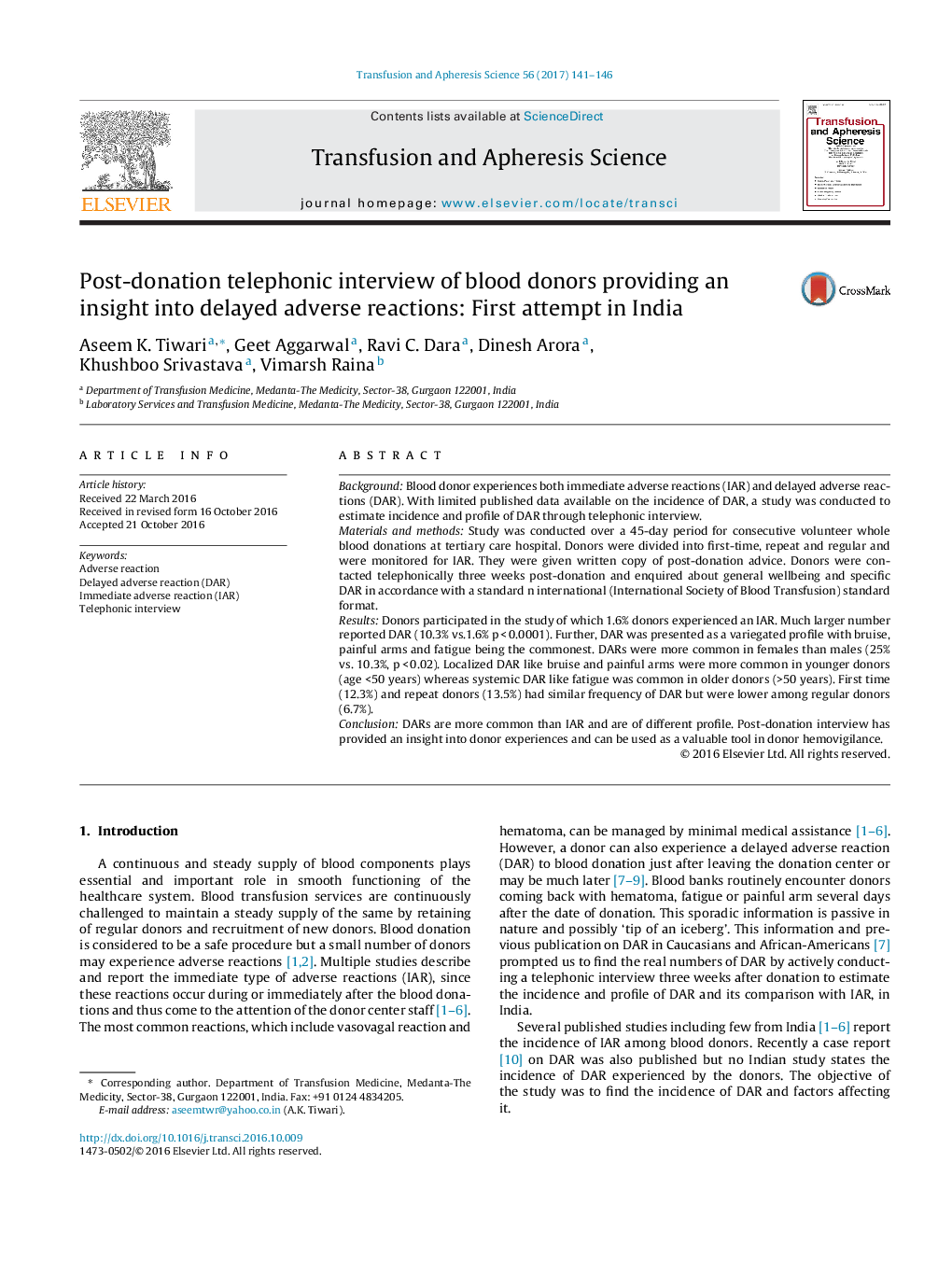| Article ID | Journal | Published Year | Pages | File Type |
|---|---|---|---|---|
| 5664707 | Transfusion and Apheresis Science | 2017 | 6 Pages |
BackgroundBlood donor experiences both immediate adverse reactions (IAR) and delayed adverse reactions (DAR). With limited published data available on the incidence of DAR, a study was conducted to estimate incidence and profile of DAR through telephonic interview.Materials and methodsStudy was conducted over a 45-day period for consecutive volunteer whole blood donations at tertiary care hospital. Donors were divided into first-time, repeat and regular and were monitored for IAR. They were given written copy of post-donation advice. Donors were contacted telephonically three weeks post-donation and enquired about general wellbeing and specific DAR in accordance with a standard n international (International Society of Blood Transfusion) standard format.ResultsDonors participated in the study of which 1.6% donors experienced an IAR. Much larger number reported DAR (10.3% vs.1.6% p < 0.0001). Further, DAR was presented as a variegated profile with bruise, painful arms and fatigue being the commonest. DARs were more common in females than males (25% vs. 10.3%, p < 0.02). Localized DAR like bruise and painful arms were more common in younger donors (age <50 years) whereas systemic DAR like fatigue was common in older donors (>50 years). First time (12.3%) and repeat donors (13.5%) had similar frequency of DAR but were lower among regular donors (6.7%).ConclusionDARs are more common than IAR and are of different profile. Post-donation interview has provided an insight into donor experiences and can be used as a valuable tool in donor hemovigilance.
